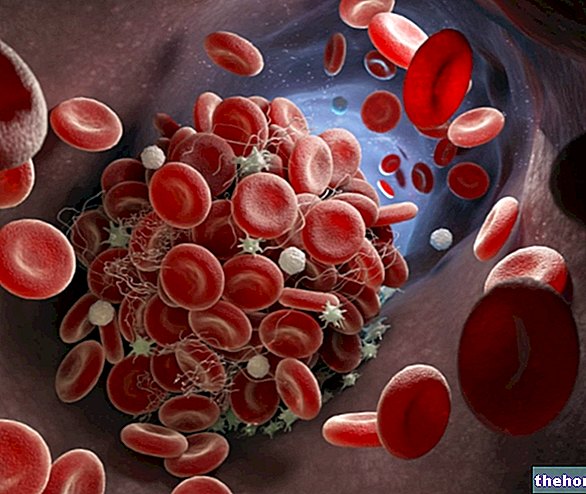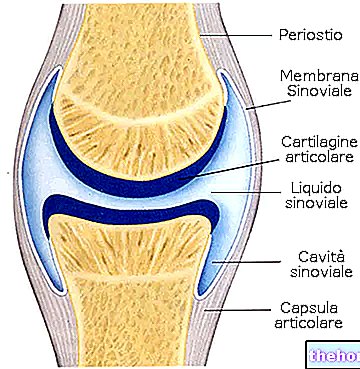Generality
In anatomy, anastomosis is defined as a connection between two organs, blood vessels, nerves, connective fibers or myocardial fibers.

In other circumstances, an "anastomosis may be abnormal or pathological (as occurs, for example, in the case of patent foramen ovale or arteriovenous fistulas).
Another distinction that can be made when talking about anastomosis is that of natural anastomosis (whether physiological or pathological) and surgical or artificial anastomosis.
Below, these different types of anastomosis will be briefly described.
Physiological anastomosis
Physiological anastomoses are naturally present inside our organism and do not cause damage; on the contrary, they are indispensable to allow the communication of districts or organs that would otherwise be isolated from each other.
Among these, the best known are, most likely, the anastomoses present in the circulatory system. In fact, there are many anastomoses naturally present in both arterial and venous vessels.
The task of blood vessel anastomoses is to ensure blood circulation even in the event of stenosis or occlusion of the large vessels from which the anastomoses derive. Therefore, these links can be considered a kind of natural bypass.
Not surprisingly, arterial anastomoses are particularly numerous in the abdominal organs, at the coronary level and in the joint areas.
Pathological anastomoses
Pathological anastomoses - as can easily be deduced from their name - are pathological unions and connections that form between organs, blood vessels, or between internal cavities and the skin; normally, these anastomoses should not be present and their formation causes damage to the body.
To indicate different types of pathological anastomoses, the term "fistulae" is preferably used. The latter, in fact, are defined as anomalous canaliculi that connect different adjacent anatomical districts which, in physiological conditions, should be separated from each other.
Among the different types of most known pathological anastomoses, we remember:
- Anorectal fistulas;
- Rectovaginal fistulas;
- Urethro-vaginal fistulas;
- Vesico-vaginal fistulas;
- Vesico-cervical fistulas;
- Bronchoesophageal fistulas;
- Fistulas of the digestive system;
- Dental fistulas.
Of course, the type and severity of the symptoms that can occur following the formation of these fistulas depend on the type of pathological anastomosis that has been created, as well as the therapeutic strategy that is decided to "undertake will depend on the triggering cause" anastomosis, its severity and the affected anatomical areas.
In any case, for more detailed information, we recommend reading the dedicated article already present on this site "Fistula: symptoms, complications and therapy".
Surgical Anastomosis
Surgical anastomosis is a particular type of anastomosis that is artificially produced by the doctor during the execution of a specific surgical procedure; for this reason, it is also called artificial anastomosis.
Generally, surgical anastomoses are performed to connect hollow organs, such as blood vessels, intestines, bronchi, ureter, etc.
Surgical anastomosis is generally used to join two hollow organs or parts of the same one, in order to resume normal functionality - previously interrupted - of that same organ.
Surgical anastomoses can be performed by the doctor in different ways and with different techniques, depending on the anatomical areas that he intends to put in communication and according to the aim he intends to achieve.
In this regard, we can distinguish:
- End-to-end anastomosis, in which the end portions of the two organs or districts to be joined are sutured directly to each other, continuously.
- Lateral-lateral anastomosis, in which the walls of the two hollow organs or portions of the same organ are placed side by side and sutured laterally to each other.
- End-to-lateral anastomosis, in which the end of an organ or part of the body is sutured with the lateral part of the same or another organ or part of the body.
- Latero-terminal anastomosis, in which, on the other hand, the suture is made between the lateral part of an organ or body district and the terminal portion of the other.
Among the different types of surgical anastomoses that can be performed, we remember the "ileo-anal anastomosis, performed to connect the" ileum and "anus (for more detailed information on this, see the" Ileostomy "article) and "gastro-enteric anastomosis, performed to connect the stomach to the intestine (eg gastric bypass for obese individuals or gastro-entero-anastomosis in the case of gastric tumors).
Plasma atherogenicity index




























